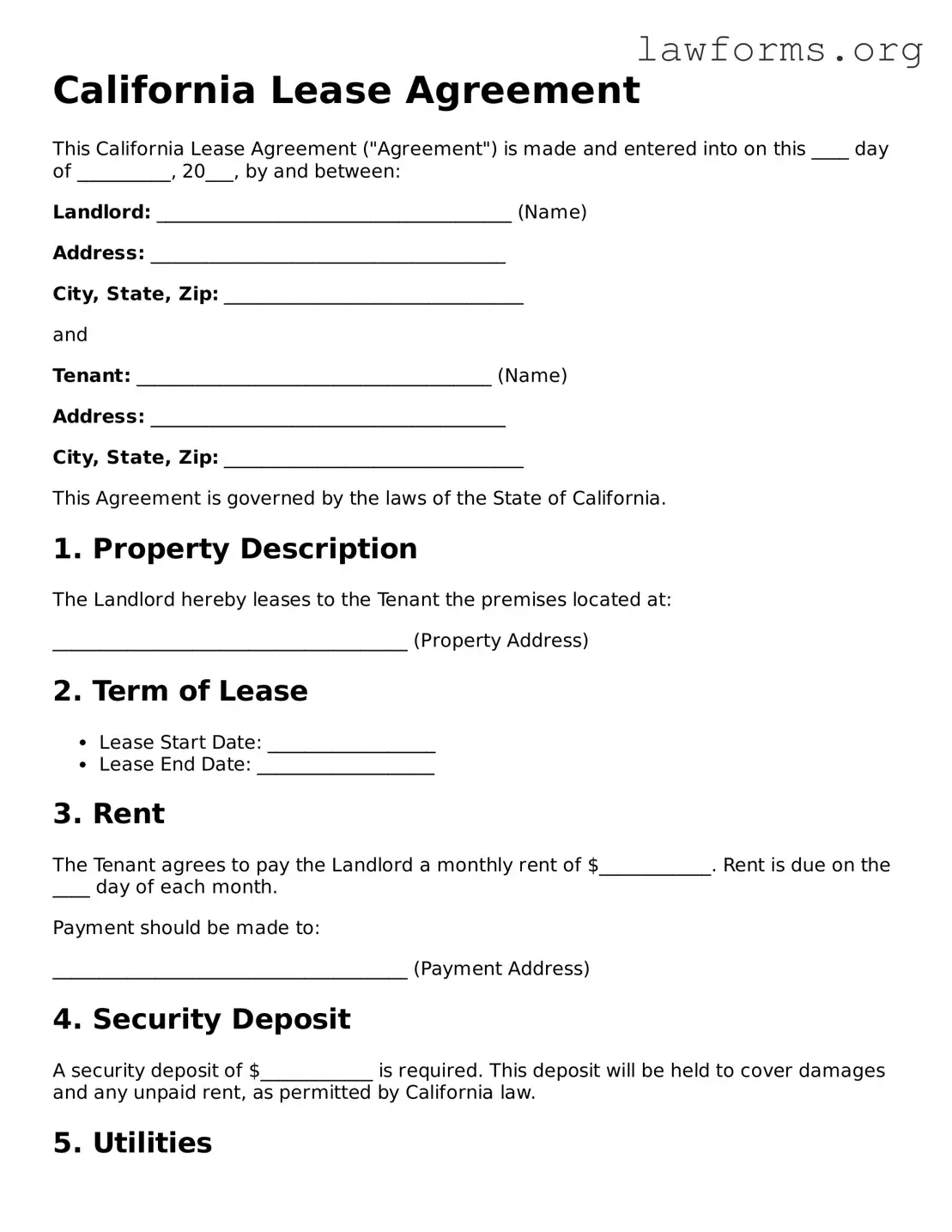California Lease Agreement
This California Lease Agreement ("Agreement") is made and entered into on this ____ day of __________, 20___, by and between:
Landlord: ______________________________________ (Name)
Address: ______________________________________
City, State, Zip: ________________________________
and
Tenant: ______________________________________ (Name)
Address: ______________________________________
City, State, Zip: ________________________________
This Agreement is governed by the laws of the State of California.
1. Property Description
The Landlord hereby leases to the Tenant the premises located at:
______________________________________ (Property Address)
2. Term of Lease
- Lease Start Date: __________________
- Lease End Date: ___________________
3. Rent
The Tenant agrees to pay the Landlord a monthly rent of $____________. Rent is due on the ____ day of each month.
Payment should be made to:
______________________________________ (Payment Address)
4. Security Deposit
A security deposit of $____________ is required. This deposit will be held to cover damages and any unpaid rent, as permitted by California law.
5. Utilities
The Tenant is responsible for the following utilities:
6. Maintenance and Repairs
The Tenant agrees to keep the premises in good condition. Any required repairs should be reported to the Landlord promptly.
7. Termination
Notice of termination must be given by either party at least ____ days prior to the intended termination date.
8. Governing Law
This Agreement shall be construed in accordance with the laws of the State of California.
9. Signatures
Landlord Signature: ____________________________ Date: _____________
Tenant Signature: _____________________________ Date: _____________
By signing this Agreement, both parties acknowledge and agree to the terms set forth herein.
